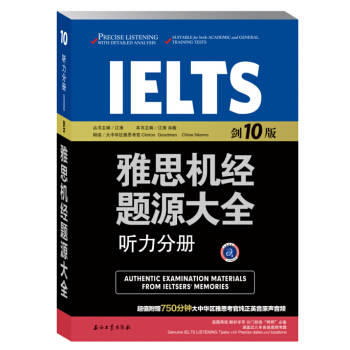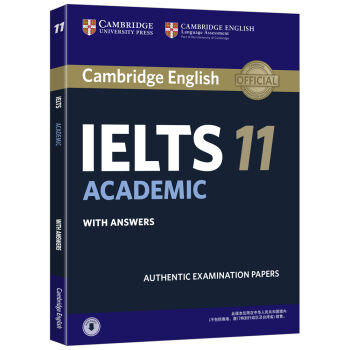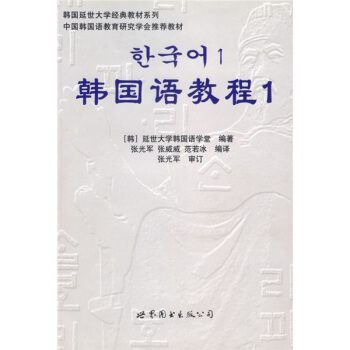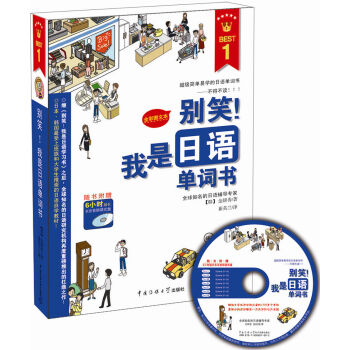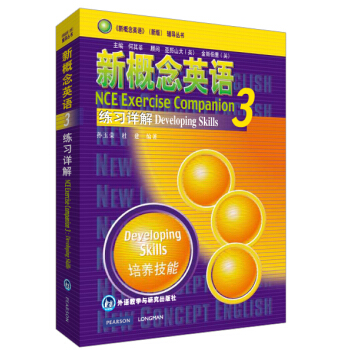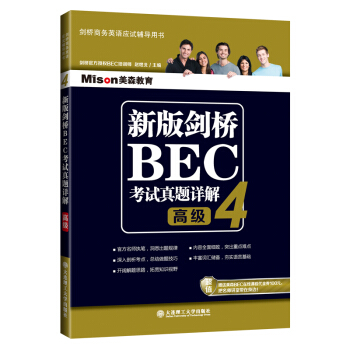

具體描述
産品特色
編輯推薦
適讀人群 :準備參加雅思考試的考生以及想提高英語水平的讀者《新東方雅思寫作》匯集瞭新東方雅思培訓經驗的精華,新東方及國際知名雅思專傢強強聯手,傾力打造符閤中國雅思考生學習特點的培訓教材。由資深國際語言專傢RodEllis親自作序,並擔任總顧問,對教材編寫予以指導;新東方教育科技集團雅思研究院院長周成剛親自審訂。 《新東方雅思寫作》根據雅思考試新趨勢,全麵覆蓋雅思考試寫作部分的各種題型,提供多樣練習形式及技巧點撥,供考生短時高效備考。既可以作為課堂培訓使用,也可以作為考生自學使用。配閤劍橋雅思真題學習,效果更佳。
內容簡介
《新東方雅思寫作》收錄瞭雅思寫作考試涉及的核心話題,結閤考試流程進行講解,詳細介紹瞭雅思寫作考試的寫作策略和技巧。《新東方雅思寫作》共有20個單元,全麵覆蓋雅思考試寫作部分的各種題型。收錄雅思考試寫作部分的常見話題,每個單元中還歸納瞭相關詞匯,總結語法知識,詳解答題技巧。不僅提供瞭多樣的練習及技巧點撥,幫助考生高效備考;還提供範文,有效提高考生的寫作水平。
作者簡介
新東方教育科技集團雅思研究院,由眾多新東方雅思名師組成,緻力於雅思考試的研究工作,著有《雅思寫作》、《雅思聽力》、《雅思閱讀》、《雅思口語》等多本暢銷圖書。目錄
Unit 0 IntroductionUnit 1 Fast Food
Unit 2 Sport
Unit 3 Media
Unit 4 Youth Issues: Computer Use
Unit 5 Education: Study Abroad
Unit 6 Advertising
Unit 7 Education: Schools
Unit 8 Environment
Unit 9 Food
Unit 10 Censorship
Unit 11 Transport
Unit 12 Leisure Activities
Unit 13 Technology
Unit 14 Money and Finance
Unit 15 Youth Issues
Unit 16 Commodities and Manufactured Goods
Unit 17 Social Issues: Population
Unit 18 International Events
Unit 19 Technology: Communication
Unit 20 Environment: Tourism
Vocabulary Bank
Answer Key
前言/序言
Overview (概論)We hope you will enjoy using this book, and that you will learn useful language and skills to help you to pass the IELTS writing test. This book covers the following points:
Grammar—this matches to ‘Grammar’ in the IELTS marking criteria.
Useful and common grammar that you will need to successfully complete both Task 1 and Task 2 IELTS writing scripts:
For example:
The most common verb tenses and how and where to use them
Correct grammar structures for comparing, evaluating, discussing and giving opinions
Correct use of prepositions to talk about numbers, times and dates
Linking Ideas and Organising your Writing – this matches to ‘Coherence’ in the IELTS marking criteria.
For example:
Useful and common ways to link ideas in sentences and between paragraphs
Ways to avoid repeating information in your writing
Writing clear topic sentences for paragraphs
Writing clear introductions and conclusions
Vocabulary – this matches to ‘Vocabulary’ in the IELTS marking criteria.
Useful and common words for both Task 1 and Task 2 writing:
Task 1 – vocabulary for writing about trends, changes, percentages, data, etc
Task 2 – topic related vocabulary for common IELTS Task 2 topics
Content and language for common IELTS topics – this matches to ‘Task Achievement’ in IELTS Task 1 marking criteria and ‘Task Response’ in Task 2 marking criteria.
Task 1 – writing an overview of the chart, clearly describing data
Task 2 – becoming aware of the different IELTS writing types, such as comparing, evaluating or giving your opinion, and learning useful language for the different types of essay
Work hard, practise at home, enjoy your study and succeed in the IELTS writing test!
序一:
Dear Student
Welcome to this New Oriental IELTS preparation course and the Writing Book in particular.
IELTS, the International English Language Testing System, is one of the world’s most popular English language tests for entry into university or higher education where English is the language of communication. In other words, it is your academic passport!
One of the most difficult challenges you will face in Academic Writing Test is being able to respond to the Task 1 and the Task 2 questions appropriately. In this book you will be guided to produce the kind of writing that is required.
Grammar is very important. You will learn the most common verbs and how to use them as well as the correct grammatical structures for the various language functions that you will need to answer Task 1 (comparing, contrasting, etc) and Task 2 (evaluating, discussing, giving opinions, etc).
You will learn how to link your ideas together fluently and how to organise your writing into coherent paragraphs.
Specific vocabulary is targeted for Task 1 to enable you to write about data, trends and changes. In addition, typical vocabulary related to common Task 2 topics is introduced.
As you work through this book you will become aware of how to respond appropriately, accurately and relevantly to the requirements set out in the different IELTS writing tasks.
Congratulations on choosing to study IELTS with New Oriental where the teaching team will be helping you to develop confidence and the ability to communicate in English with greater fluency.
Ready? Let’s go!
Rod Ellis
第二語言教學之父
“Task Base”教學法創始人
序二:
Dear Student,
Thank you for choosing to study for the IELTS with New Oriental.
This book is the long anticipated result of a close cooperation between New Oriental and international IELTS experts to develop our own IELTS training materials. We believe it offers a different approach, with the following features:
First of all, the language used is likely what you will encounter in a real classroom or work setting while living abroad. The setting of each dialogue is also consistent with how you might encounter English as used by native speakers in their own country.
Also, under the guidance of renowned professor Rod Ellis, our partner international research team has delivered a proven methodology for ensuring the intended acquisition of needed skills for IELTS test takers in speaking, listening, reading and writing.
And most importantly, this book incorporates ten years of IELTS training experience by the very best teachers at New Oriental, and therefore has been customized to suit the needs of Chinese students.
I sincerely hope that together with these materials New Oriental teachers can make your IELTS classroom fruitful and rewarding. Enjoy your learning time with New Oriental!
周成剛
新東方教育科技集團
用戶評價
這本書的實用性超乎我的預期,尤其是它對雅思寫作中“跑題”這一大忌的規避指導,簡直是教科書級彆的。我過去一直苦於自己的文章論點分散,總感覺抓不住重點,但這本書裏關於審題和構思段落的“三步走”或“四段式”模型,提供瞭一個非常堅固的邏輯腳手架。它不是簡單地告訴你“要緊扣主題”,而是給齣瞭具體的工具去檢查你的每一個分論點是否都直接支撐瞭中心論點。舉個例子,在解析一個關於全球化影響的題目時,作者詳細展示瞭如何從一個寬泛的主題句逐步收窄到具體的例子,並清晰地標示齣這個例子如何反哺瞭主論點,這種層層遞進的解析,讓我對自己文章的結構有瞭前所未有的掌控感。這種細節的把控,體現瞭編者對高分作文標準的深刻理解,絕非泛泛而談。讀完相關的章節後,我嘗試著按照書中的框架去寫一篇小作文(Task 1),特彆是對於圖錶信息如何進行有效篩選和概括的技巧,之前我總覺得抓不住那些“關鍵趨勢”,但書裏教我的那些描述麯綫變化和對比數據的方法論,讓我第一次寫齣瞭讓閱捲人眼前一亮的報告。
評分這本書的特色在於它對“批改思維”的模擬,這一點是市麵上很多教材所缺乏的。它不是僅僅提供範文,而是深入到瞭“閱捲人視角”去拆解範文的得分點和失分點。在對高分範文進行剖析時,作者常常會穿插一些小提示,比如:“如果此處使用這個動詞,可以提升邏輯力度10%”或者“這個過渡句雖然流暢,但在論證強度上略有不足,建議替換為XX”。這種“幕後揭秘”的方式,讓我仿佛有瞭一個隨身的私人導師在耳邊指導。特彆是對於Task 2的論證部分,書中對如何構建“讓步段”的策略分析得極為透徹。它清晰地指齣瞭讓步段的目的是什麼,應該如何平衡讓步與堅守己方論點,避免讓步段喧賓奪主。我感覺,光是學會如何巧妙地處理讓步和反駁,我的文章的深度和說服力就已經提升瞭一個檔次。這種注重“如何被高分對待”的教學思路,對於那些追求穩定高分(比如7分以上)的考生來說,無疑具有極高的參考價值。
評分這本書的裝幀設計確實很吸引人,拿到手裏質感很不錯,封麵配色沉穩又不失活力,讓人一看就知道是針對備考人群的實用工具書。我當時在書店裏一眼就被它吸引住瞭,主要是被封麵上那種“直擊痛點”的排版風格所吸引。翻開內頁,排版布局也相當清晰,重點內容用不同顔色或加粗的方式標注瞭齣來,這對於需要快速定位信息、提高閱讀效率的考生來說簡直是福音。比如,在講解不同題型(Issue/Argument)的結構框架時,作者用瞭大量的圖示和流程圖,把原本抽象的寫作邏輯具象化瞭,我感覺自己一下子就抓住瞭核心骨架。而且,它不像有些教輔那樣堆砌晦澀的理論,而是非常注重實操性。它對於邏輯連接詞和高級詞匯的講解,都是直接嵌入到範文解析中的,而不是孤零零地羅列在一個章節裏,這種“學以緻用”的編排方式,極大地降低瞭我們應用新知識的門檻。可以說,從拿到書的那一刻起,它給我的第一印象就是:這是一本經過精心打磨、注重用戶體驗的備考利器,準備充分地服務於考生的實際需求。
評分坦白說,我之前用過好幾本不同的雅思寫作參考書,但很多都陷入瞭一個誤區,即大量堆砌“華麗但空洞”的詞匯和句式,讀完後感覺自己“會寫”瞭,但一到考場上就大腦一片空白,因為那些句子脫離瞭實際語境,難以自然地嵌入。這本書的風格則完全不同,它真正做到瞭“有效錶達勝過花哨堆砌”。作者在講解高級句式時,總是會配上大量的“錯誤示範與正確示範”對比,這種對比教學法極其有效。它不是直接給你一個復雜的從句結構,而是先展示一個初級錶達,然後逐步引導你如何用更精準、更地道的銜接詞和從句結構去替換,使其更符閤學術語境。尤其讓我印象深刻的是它對“argumentative language”的講解,如何既能錶達強烈的立場,又不至於顯得過於武斷或情緒化。通過書中對一些高頻話題(如教育、科技、環境)的深度解析,我發現真正的高分文章,關鍵在於邏輯的嚴密性,而這本書提供的,正是一套嚴密的思維工具,而非單純的語言技巧的堆砌,這纔是區分“及格”和“優秀”的關鍵所在。
評分對於時間管理和考前衝刺階段的復習,這本書也提供瞭非常人性化的指導。它沒有要求讀者一遍讀完就掌握所有內容,而是建議讀者根據自己的薄弱項進行模塊化復習。例如,它把寫作素材分成瞭A、B、C三類主題庫,並針對每個主題庫提供瞭快速記憶的口訣和關鍵句型。我尤其喜歡它在書的最後附帶的“臨場應急模闆”,但這並非那種僵硬的、一成不變的套路,而是提供瞭幾個“萬金油”式的開頭和結尾的骨架,鼓勵我們在保證邏輯清晰的前提下,填充自己的論據。這在考前一周,我需要快速找迴寫作狀態時,起到瞭定心丸的作用。它教會我,在有限的時間內,如何最大化地保證文章的結構完整性和語言流暢度。總而言之,這本書的價值不在於提供一勞永逸的答案,而在於它提供瞭一套完整、可執行、並且能適應不同考生水平的“自我提升係統”。它讓我從一個“害怕動筆”的應試者,轉變成瞭一個能夠“有策略地構建論點”的寫作者。
評分好書,雅思詞匯學習好幫手,值得購買!
評分不是那芭芭拉留著吧在哪莎啦啦刷卡是
評分哈哈哈哈哈哈哈哈 不錯
評分雅思方麵比較好的輔導書
評分網上購物第一選擇就是京東,確實方便快捷,商品質量也有保證,值得信賴。
評分質量非常好,與描述一緻,大品牌值得信賴,物流送貨速度也很快就跟在超市買東西一樣快速便捷!
評分雅思備考好書,值得購買!!
評分不是那芭芭拉留著吧在哪莎啦啦刷卡是
評分不錯不錯,內容翔實。
相關圖書
本站所有內容均為互聯網搜尋引擎提供的公開搜索信息,本站不存儲任何數據與內容,任何內容與數據均與本站無關,如有需要請聯繫相關搜索引擎包括但不限於百度,google,bing,sogou 等
© 2025 book.coffeedeals.club All Rights Reserved. 靜流書站 版權所有

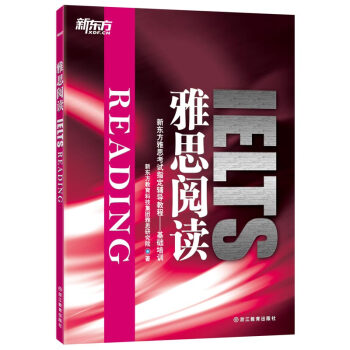



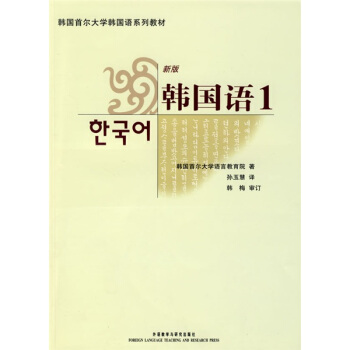


![80天攻剋雅思(閱讀 第四版) [Ielts In 80 Days: Reading] pdf epub mobi 電子書 下載](https://pic.windowsfront.com/12013570/57b44265Nfecdecde.jpg)
![學生實用高中英語語法指南與實踐(第8版) [With Exercises for Senior Middle School Students] pdf epub mobi 電子書 下載](https://pic.windowsfront.com/11479043/53a6327fNbc46145f.jpg)
